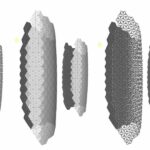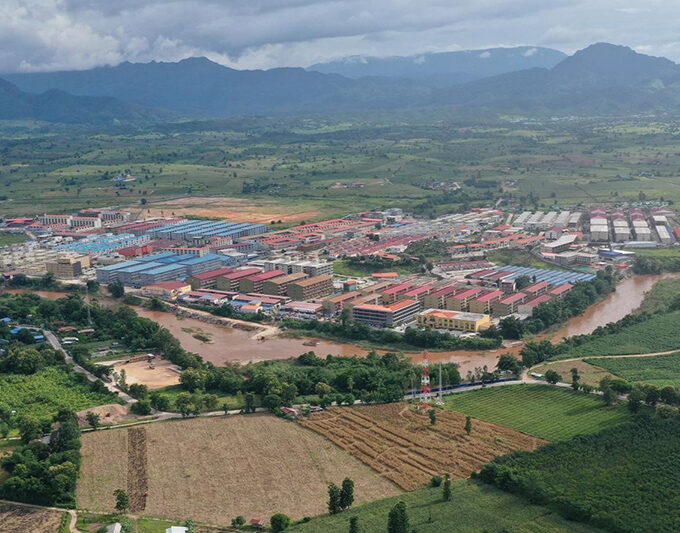According to Japan’s Jiji Press, the Japanese government set a new goal on June 13: to create 10,000 jobs outside the Tokyo metropolitan area by the end of fiscal year 2027 (April 2027 to March 2028) by promoting the relocation of corporate headquarters. This initiative is part of Prime Minister Shigeru Ishiba’s “Regional Revitalization 2.0” policy, which aims to tackle the issue of excessive centralization in the Tokyo metropolitan region. That issue—often referred to as “big city syndrome”—stems from the overconcentration of population, economic activity, education, and cultural resources in the capital area.
Globally, capital regions tend to concentrate resources. However, in both Japan and South Korea, this monocentric concentration has become increasingly severe, weakening the development momentum of other regions and contributing to a further decline in birth rates. In response, many have proposed solutions such as fostering “multi-core concentration” or developing “hub cities” to address the growing imbalance.
Youth, Jobs, and the Pull of the Capital: Japan and South Korea’s Urban Imbalance
For a long time, “moving to Tokyo” has been a dream for many people in Japan. In classic Japanese films and TV dramas, scenes where characters are thrilled at the sight of Tokyo Tower are common. Behind these dreams and iconic moments lies the reality of Japan’s “monocentric concentration” in the Tokyo metropolitan area.
According to The Japan Times and other media outlets, the so-called “Tokyo metropolitan area” includes Tokyo itself and its neighboring prefectures of Saitama, Chiba, and Kanagawa. Although this region makes up only about 3.6% of Japan’s land area, it holds a disproportionately large share of the population. In the United Nations’ 2024 global metropolitan rankings, the Tokyo metropolitan area topped the list with a population of 37.115 million. As of 2024, Japan’s total population is approximately 120 million, meaning roughly one-third lives in the Tokyo region.
Japan’s 2024 population migration report, released this January, showed that Tokyo alone had a net population inflow of around 79,200 in 2023, while the greater metropolitan area saw a net increase of roughly 135,000 people. This marks the third consecutive year of population growth in the region. Despite government efforts since 2014—such as the “Regional Revitalization” policy aimed at balancing population inflow and outflow—monocentric concentration in the Tokyo area has only intensified.
Notably, young people make up the majority of those moving into the Tokyo metropolitan area. According to the migration report, the age group with the highest net inflow in 2023 was 20–24 years (86,900), followed by 25–29 years (32,000) and 15–19 years (20,800). Chief Cabinet Secretary Yoshimasa Hayashi noted that these individuals move primarily for employment or higher education.
The Tokyo region hosts a massive share of Japan’s employment and education resources. According to data released last year by the Japan External Trade Organization, about 3,000 companies with capital of at least 1 billion yen (roughly ¥49 million RMB) are headquartered in Tokyo—half of all such companies in Japan. Over 75% of foreign companies based in Japan also have their headquarters in Tokyo. In terms of labor demand, Tokyo’s effective job-opening-to-applicant ratio in 2023 was 1.78, compared to the national average of 1.31. Nikkei reported in July 2023 that the national average minimum hourly wage was 1,054 yen, while Tokyo’s was 1,163 yen. Educationally, the Tokyo metro area is home to numerous universities and research institutions.
A similar, and arguably more severe, monocentric pattern exists in South Korea. A Korean saying goes, “Send horses to Jeju, send people to Seoul”—meaning horses should be raised in Jeju, while people must go to Seoul to succeed. “We live in the Republic of Seoul,” as reported by The Sungkyun Times, the campus newspaper of Sungkyunkwan University. In South Korea, Seoul has long been the political, economic, cultural, and educational center, and public preference for the capital has evolved into what is now known as the “Republic of Seoul” phenomenon. The National Institute of the Korean Language defines “Republic of Seoul” as a satirical term describing the excessive concentration of the country’s political, economic, social, and cultural resources in the capital.
South Korea’s capital region includes Seoul, Gyeonggi Province, and Incheon, covering about 12% of the country’s land area. As of December 2023, the registered population in the capital area was 26.01 million—50.7% of South Korea’s total population. Like Japan, South Korea has seen a marked trend of young people flocking to the capital. A report by the Bank of Korea in November 2023 on inter-regional migration and regional economies revealed that from 2015 to 2021, 78.5% of the net population inflow to the capital area consisted of young people aged 15 to 34.
58% of jobs are concentrated in the capital region—10 times more than in the U.S. According to Nocut News, citing data obtained in 2023 by Kwon Young-jin (phonetic), a lawmaker from the People Power Party, 52.5% of South Korea’s GDP and 58.5% of its jobs in 2022 were concentrated in the capital region—roughly ten times the level seen in the United States, where only 5.1% of GDP and 4.9% of jobs are based in the capital region.
According to Yonhap News and other sources, in 2022, 49.1% of South Korean enterprises and institutions—about 3.01 million entities—were located in the capital area. The number of employed people in the capital region reached 14.48 million, accounting for 51.6% of the country’s total employed population. Economically, the capital region was responsible for 72.3% of South Korea’s total exports in 2022, which amounted to $683.6 billion.
In South Korea, high-quality jobs often require a top university background as an entry ticket, and these elite educational resources are heavily concentrated in the capital region. According to a 2023 report by the Korea Future Education Policy Research Institute, the capital region is home to 113 universities—35% of the national total. However, in the 2023 university admissions cycle, 183,000 freshmen enrolled in schools in the capital region, making up 40.9% of total university admissions—well above the proportion of universities in that area. This indicates an even stronger trend of student migration toward the capital.
The problem seeps into areas like the economy and national security
The monocentric concentration in the capital regions of both Japan and South Korea has triggered a host of problems. In addition to typical “big city” issues like traffic congestion, environmental degradation, and rising housing prices, the most critical concerns are the stagnation of regional development and declining birth rates.
Japan has 47 prefectures. According to the country’s 2024 population migration report, while the Tokyo metropolitan area saw a clear increase in net inflow, 40 prefectures experienced net population outflows. The largest outflow was from Hiroshima (10,700 people), followed by Aichi (7,292), Hyogo (7,287), and Shizuoka (7,271).
Government data shows that Japan’s national total fertility rate (TFR) dropped to 1.20 in 2023—its eighth consecutive yearly decline. Tokyo’s TFR fell to 0.99, marking the first time it dipped below 1. Many believe that the heavy population concentration in the Tokyo area, combined with issues like sky-high housing prices and extreme stress, plays a major role in the country’s falling birth rate.
According to Bridge Economy, a Korean news outlet, a joint report by Statistics Korea and the Korea Employment Information Service revealed that, as of the end of 2023, 51 of South Korea’s 228 cities, counties, and districts were classified as “high-risk disappearing regions,” with another 67 already in the “at-risk of disappearing” category.
In 2023, the Korea Research Institute for Human Settlements released a report titled “The Relationship Between Territorial Imbalance and Low Birth Rate,” analyzing factors influencing regional total fertility rates (TFR) by comparing the capital region with non-capital regions. According to Maeil Business Newspaper, the report showed that housing stability—measured by average home prices or rental costs—was the most significant factor affecting birth rates in the capital region. For instance, a 10% increase in apartment rent corresponded to a 0.01 decrease in TFR. Other factors such as long commuting times and aging housing also caused many to hesitate about having children.
Many young adults around age 30 face triple pressure from job competition, housing burdens, and reproductive anxiety. Mr. Han, a Seoul resident, enjoys the convenience of living close to his office, avoiding the city’s notorious packed buses and “hellish” subways. Still, the intense pressure of urban work life means he’s out the door within 30 minutes of waking up each morning. As he cycles through the city—once his childhood dream destination—he feels deeply conflicted. “When I was a kid, I dreamed of living in Seoul and becoming a white-collar worker downtown,” he told reporters. “But now that the dream has come true, I realize that Seoul has everything—except anything that truly belongs to me.”
In non-capital regions of South Korea, every 1 percentage point drop in net inflow of young people leads to a 0.03 decline in TFR. Another major issue is the lack of career-sustaining jobs for women outside the capital, which discourages young people from settling down or starting families in those areas.
According to Da Zhigang, Chief Expert at the Northeast Asia Strategic Research Institute of the Heilongjiang Academy of Social Sciences, South Korea’s excessive capital concentration also deeply affects its economic structure and national security. First, it creates a monopolistic economic structure in the capital region, while local areas lose vitality due to industrial hollowing-out, weakening the country’s overall economic resilience. Second, this resource imbalance entrenches social class divisions and reduces upward mobility. Finally, in the event of conflict, the capital—being the political, economic, and population center—becomes a vulnerable strategic target.
“Multi-core concentration” and the “hub city” strategy
“The decline of local areas will ultimately affect the national strength—including that of Tokyo.” In January 2023, The Asahi Shimbun quoted then-Minister of Internal Affairs and Communications Takeaki Matsumoto, who stated that Japan’s government must take firm action to support and revitalize local communities. To counter capital-region overconcentration, Japan has introduced several measures, such as the 2014 Regional Revitalization policy and the 2019 Relocation Support Program. Local governments have also made efforts to attract and retain residents—for example, by improving conditions for families with children, offering consultations about housing and employment, and creating support systems for newcomers. On June 12, The Yomiuri Shimbun published an article by an entrepreneur involved in discussions on the “Regional Revitalization 2.0” initiative, arguing that the focus should not be on “who comes back” but rather “how to keep” the people already there. The author emphasized listening to the needs of women and young people in local development planning.
Japanese academics and policymakers are also pushing for a shift from “monocentric concentration” to “multi-core concentration.” Unlike focusing solely on Tokyo, this concept advocates developing multiple urban and industrial hubs across the country. These regional “core cities” would help spread risk, sustain essential services and jobs, and enable a more balanced use of national land and resources.
However, attracting population is no easy task. Take Ehime Prefecture, for example: in 2023, it attracted 6,910 new residents, a drop of 344 from the previous year, and short of its 7,600-person goal. Authorities there believe the post-COVID population rebound to Tokyo, combined with rising competition between regions, contributed to the decline. Furthermore, unmet expectations around housing and job opportunities deterred many from relocating to the prefecture. In response, Ehime officials plan to boost the region’s appeal by organizing migration expos in central Japan and producing promotional videos featuring celebrities.
“The land is the body of the nation… and apart from primitive organisms, no living being thrives with only one overdeveloped organ—nor should a country,” wrote the student newspaper of Kyungpook National University in Korea, highlighting the importance of balanced regional development. According to the latest report by the Bank of Korea, despite successive administrations pushing for balanced growth, the ongoing decline of major non-capital cities has exposed the limitations of existing policies. The Bank recommended concentrating social infrastructure, medical and cultural facilities, and public agencies into “hub cities” outside the capital region. By expanding industrial capacity and urban competitiveness in these areas, Korea could counteract the unchecked sprawl of its capital.
The Korea Research Institute for Human Settlements also proposed differentiated birth rate policies for the capital and non-capital regions. In the capital, policies should focus on building child-friendly public rental housing. In non-capital regions, instead of simply trying to attract corporate investment, the focus should shift toward offering a diverse range of jobs that appeal to youth and women.













Leave a comment